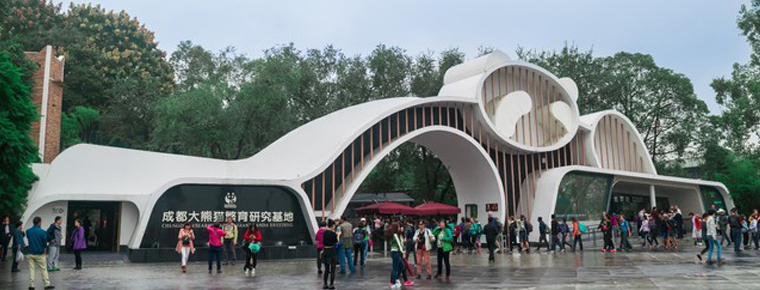2019-03-27

- By ChinaWiki.net
- Chinese Edition
- 2020-03-13
Chengdu Giant Panda Breeding Research Base is one of the main research bases for the Chinese government to carry out ex-situ conservation projects for endangered wildlife such as giant pandas, and is a national AAAA tourist attraction.

It is a well-known research institution for the protection of rare and endangered wild animals, such as giant panda, which integrates scientific research and breeding, conservation education, education and tourism, and the construction of panda culture.

The first batch of national
primary and secondary students research and practice education base.

Chengdu giant panda breeding research base is the breeding, treatment and breeding of giant pandas in Chengdu zoo.

Built on the basis of. In the 1980s, the cold arrowhead bamboo of the Qionglai Mountains blossomed and died. Some giant pandas were rescued and concentrated in the Chengdu Zoo for starvation.

In 1987, in order to strengthen the rescue and management of sick and hungry giant pandas, separate the functions of panda education and display from those of rescue and research, strengthen the scientific research of giant pandas and improve the breeding level of giant pandas, the Chengdu Municipal People's Government decided to establish a breeding and research base for giant pandas in Chengdu, and implemented a team with Chengdu Zoo, two pieces. Brand.

After 1990, the Chengdu base and the Chengdu zoo were divided into two independent entities.

In 1992, the giant panda museum was open to tourists.

In 1997, the Chengdu Giant Panda Breeding Research Base jointly funded more than 15 million yuan by the State Planning Commission, the Chengdu Planning Commission and the Chengdu Giant Panda Breeding Research Foundation to establish the first open laboratory in China to carry out research on endangered species with Chinese characteristics.
In 2000, the National Wildlife Conservation System took the lead in carrying out public protection education and established the Ministry of Popular Science Education.
In 2001, the Open Laboratory was named "Sichuan Key Laboratory of Reproduction and Conservation of Endangered Animals" by Sichuan Science and Technology Department. In the same year, Chengdu base cooperated with Sichuan University to carry out research and experiments.

In 2003, the Base was awarded the "Advanced Unit for Talent Development in Sichuan Province" by the Sichuan Provincial Party Committee and the provincial government, and the "National Post-doctoral Research Workstation" awarded by the Ministry of Personnel.
In 2006, it was officially awarded the "national AAAA" scenic spot by the National Tourism Administration.

In 2007, the laboratory was officially approved by the Ministry of Science and Technology as "endangered Wildlife Biology - provincial and ministerial co-construction of national key laboratory". At the same time, modern panda museums, animal specimens and gene pools of endangered animals have been established in Chengdu base and Sichuan University.

In 2011, the International Research Center for Giant Panda Conservation Biology, jointly established by the Base and the Global Science Foundation, was also established.
In September 2014, the base was awarded the honorary title of "the national advanced group of technical talents". In October 1st, the Dujiangyan panda breeding center was opened to trial.
In April 20, 2015, "panda Valley" was officially opened to the public.
Ask a Question
Your email address will not be published.



0 Questions